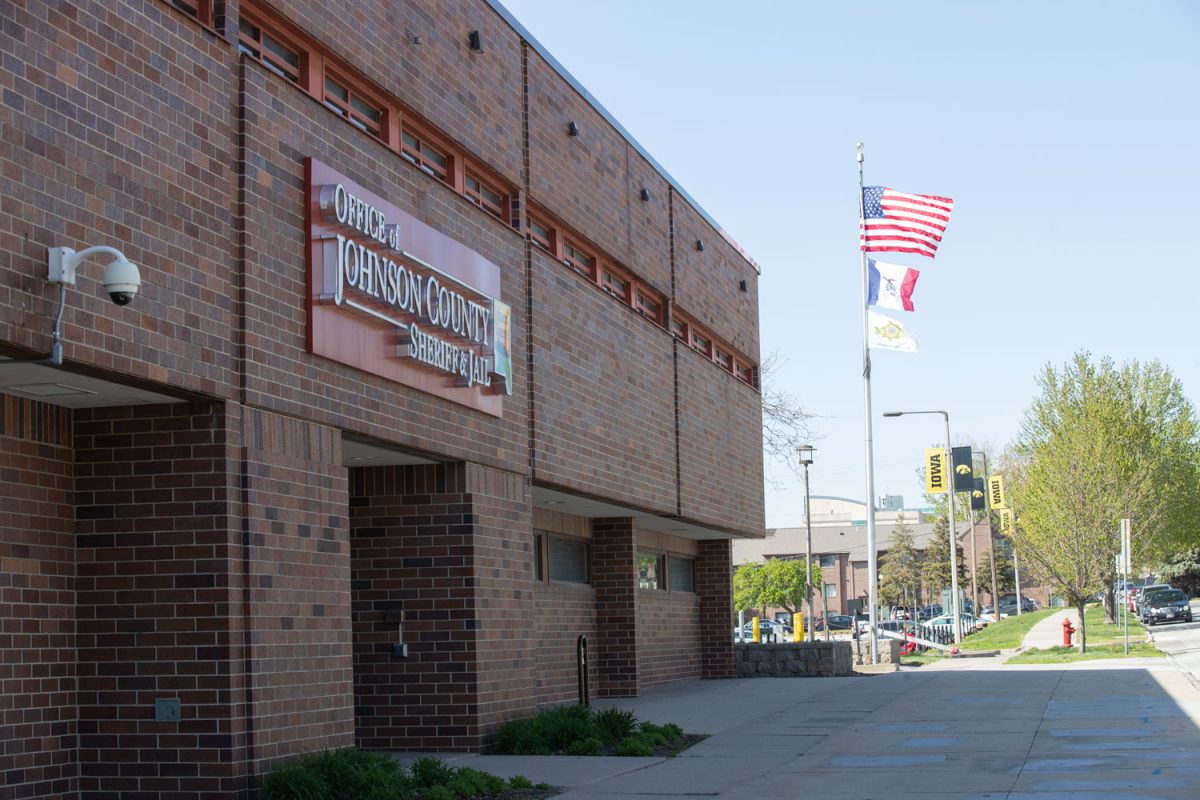The cost of housing Johnson County inmates in other county jails continues to rise as the county pursues efforts to restore its current jail or even construct a new facility.
A report published by the Johnson County Sheriff’s Office in January 2024 shows a running total of $15.8 million in spending to house inmates in other counties between January 2003 and December 2023. The report also indicates that Johnson County inmates have been sent to 17 different facilities across Iowa since 2003.
Issues with housing stem from the current state of the jail, which is the only jail in the county, meaning all criminal offenders go to that facility. The facility has a capacity of 92 inmates. Frequent repairs have been necessary over the last year and engineering firm Faithful and Gould assessed the building and rated it 104 percent. According to the firm, 60 percent is the point at which demolition of the structure should be considered.
The Johnson County Jail, located at 511 S. Capitol St. in Iowa City, has been in use since 1981.
As previously reported by The Daily Iowan in September 2023, the jail has substantial structural deficiencies with the facade system, the exterior wall, and some supporting structural elements.
In an interview with The Gazette, Johnson County Sheriff Brad Kunkel said the jail can hold 65 inmates despite having 92 total beds because of the available staff at the sheriff’s office and the number of inmates who need an individual cell due to things like mental illness or aggressive behavior.
According to the jail’s report, Linn County, Henry County, and Marshall County, which is the farthest at nearly 100 miles from Johnson County, made agreements with Johnson County to house inmates over the past 20 years.
In an email to the DI, Kunkel said fiscal 2023 costs were down to $331,885, compared to $748,175 in fiscal 2018. He wrote that yearly costs decreased but predicted costs would be over $400,000 for fiscal 2025.
According to the jail’s report, these costs do not take into account the cost of transportation to and from the jails around Iowa.
He wrote that, on average, 19 inmates were housed out of county per day during fiscal 2023. Currently, Johnson County inmates are being housed in Linn and Henry counties, though 17 other counties have been contracted in the last 20 years. Kunkel also wrote that funding is adequate.
“However, over the last 20 years, we have spent nearly $16,000,000 on out-of-county inmate housing. These are local tax dollars being spent outside of Johnson County, and it is nonsensical to continue down this path,” Kunkel wrote. “We should focus on replacing the jail and keeping our tax dollars in Johnson County.”
Linn County Sheriff Brian Gardner, who oversees the Linn County Jail in Cedar Rapids, wrote in an email to the DI that Linn County jail has no housing issues. Specifically, the fact that the facility is up-to-date and spacious enough allows them to hold inmates for Johnson County.
Henry County Sheriff Rich McNamee said Henry County has held Johnson County inmates for months at a time, which he said his county does at a rate of $60 per day.
RELATED: Johnson County Jail in dire need of renovations as building ages
McNamee said Henry County had a small jail with eight beds for inmates before 2018. At that time, his county would have to send inmates to other counties when necessary.
As a result, Henry County assessed the jail and built a new facility with 96 beds that not only holds Henry County inmates but allows them to take in Johnson County’s inmates.
According to Data USA, in 2022, the violent crime rate in Johnson County was 271 per 100,000 population and the violent crime rate for Linn County was 226 per 100,000 population the same year. Johnson County has a population of 156,420, and Linn County has a population of 229,033.
The primary issue that the Sheriff’s office faces is creating enough room for inmates, which Detective Sgt. Alissa Schuerer of Johnson County addressed this in an email to the DI, indicating that the Sheriff’s office hopes to see approval to construct a new facility.
“There is very little room to physically expand our location while still being financially responsible,” Schuerer wrote.



